
The 5 Best Sailboats For Beginners

Sailing is a fun activity for people of all experience levels. In fact, learning to sail a basic boat is relatively easy—in the right environment, you can start cruising with minimal experience.
However, the idea of a beginner commanding a 55-foot ketch in the middle of the Atlantic Ocean is a bit ridiculous. Even though virtually everyone can sail, beginners should learn the basics in a controlled environment—and on the correct boat.
Boat size doesn’t necessarily affect its beginner-friendliness, because sailors need to take into account factors such as rig simplicity and handling characteristics.
Many beginners make the mistake of picking the wrong boat to begin with, which can lead to frustration and turn them off of sailing forever.
To mitigate these issues, this article will cover the best sailboats for beginners —so you can get on the water and start sailing safely and comfortably.
Table of contents

Best Rigs for Beginners
There are many types of sailboat rigging , and some are more beginner-friendly than others. Unfortunately, some of the most aesthetically pleasing rigs are also the most complicated.
Eventually, sailors can acquire enough skill to master complex rigs, but it’s best to start simple.
Arguably, one of the simplest sailing rigs is the Lateen Rig. This rig consists of a mast, boom, and spar, along with a single halyard and mainsheet. With only two ropes in its simplest configuration, the Lateen Rig makes an excellent starter sailboat, and it will be featured on this list.
For larger boats, the Bermuda Sloop rig is an excellent choice. This rig is quite common and includes a jib for a larger sail plan.
For those who desire a slightly more robust (but single sail) layout, the gaff-rigged catboat is also an excellent choice. This versatile craft (and rig) has a large and relatively simple single sail, which is easier to handle than multiple sails.
Top Five Sailboats for Beginners
Now, we’ll go over the top five sailboats for beginners . These boats will descend in order from smallest to largest, but not by the level of experience needed.
Remember, just because you’re new to sailing doesn’t mean you have to settle for a boat that’s too small. Beginners can handle larger boats with some training, and some are easier to handle than their smaller counterparts.
The following boats were chosen because of their handling characteristics, low cost-of-ownership, and simplicity, as all of these factors are important for choosing the best beginner sailboat.
5) Sailing Dinghy
The sailing dinghy is the quintessential starter sailboat. These tiny, lightweight, popular, and highly affordable little craft is easy to operate and relatively difficult to capsize. The popular Optimist Sailing Dinghy, while designed for children up to the age of about 15, can be used (sometimes hilariously) by adults as well. An Optimist-style dingy is a great option for beginners over the age of 15, as boats of this style can be found in a variety of sizes. The sailing dinghy is a very popular youth racing sailboat, especially in the United States and the United Kingdom. While it’s not particularly fast, this little boat has wonderful handling characteristics and is relatively difficult to capsize. This open-cockpit boat uses a centerboard and detachable tiller and can be beached or carried atop a car without much hassle. The mast is removable, and all parts are easily stowed. Overall, the Optimist and its copycats are a remarkable little craft, equally useful as a tender for a larger boat or a standalone beginner sailboat.
Dinghy rigs vary between builders, but many use the simple Spirit Rig. The rig consists of a single sail and mainsheet, along with one mast, boom, and spar. The leech is stiffened by battens, and ties along the luff secure it all to the mast. Hoisting and securing the rig is easy, and lines are secured to the boat by a cleat. This simple rig has plenty of sail area for most places, and sailors can secure the mainsheet to a block or simply hold it in their hands.
The price of sailing dinghies can vary widely depending on multiple factors. Professionally-made sailing dinghies start around $3,500 new, and plywood kits are available for around $1,000 to $2,000. Used dinghies (including Optimist sailing dinghies) can be found on Craigslist for as low as a few hundred dollars.
{{boat-info="/boats/vanguard-sunfish"}}
The Sunfish is a brilliant little sailboat, and a very fast boat indeed. This little racing dinghy, while only 13 feet in length, can be an enormous amount of fun for beginners and experienced sailors alike. The best way to describe the handling of a Sunfish is, ‘tender,’ though it’s not difficult to master this little boat. For its size, the Sunfish has a relatively large sail area and a very shallow draft. This boat has a small cockpit and can be controlled easily by a single person. The large sail plan of the Lateen-Rigged Sunfish makes for excellent performance in light winds and amazing speed on windy days. The Sunfish is a lightweight fiberglass boat with a simple rig and is a great step-up from a sailing dinghy. It’s possible to learn how to sail on this boat, but every sailor who’s spent time on a Sunfish will probably recommend bringing a towel. The boat is relatively easy to capsize for beginners and it heels aggressively, but these characteristics can teach sailors some important lessons. The heeling characteristics of the Sunfish can help beginners get accustomed to the feeling and help them understand the limits of a sailboat and how to avoid capsizing.
The Sunfish features a Lateen Rig, which has some shared characteristics with the simple Spirit Rig. The Lateen Rig has a single spar, mast, and boom, and is easy to set up and dismantle. The mast is removable as well, making stowing and transportation relatively easy. The large sail plan of the Sunfish makes it ideal for lakes and other areas where the wind is sporadic or very low, and the boat can be safely handled in many conditions. The boat is great for racing and learning and is also available in a Bermuda rig. The Sunfish is recognizable by the distinctive fish logo in the top corner of the sail, and the classic rainbow sails striping.
The Sunfish is still commercially manufactured. You can purchase one new from the factory for around $5,000 today, and options are available to make the boat your own. While the boat is designed to be sailed by a single person, two adults can purchase this boat and use it together comfortably. Used Sunfish prices vary, but a fully-outfitted boat in good condition can cost upwards of $1,000. They hold their value well, and they’re a great choice for beginners.
{{boat-info="/boats/vanguard-laser"}}
The Laser is considered by many to be the Sunfish’s main competitor. The two boats are the same length (13 feet 9 inches) and share many of the same handling characteristics. However, the boats do have some notable differences. Many people consider the Laser to be a step-up from the Sunfish in difficulty, as the boat handles much more like a racer. The Laser has been used in the Olympics for racing. The laser is small and simple enough for beginners but requires skill to operate. Beginners can learn a lot from sailing a Laser and have an enormous amount of fun in the process. This fast little boat is simple and easy to set up but handles like a racecar. If you’re a beginner on a laser, you’ll probably capsize at some point—which isn’t always a problem if you’re in a controlled environment, as the boat can be righted easily.
The laser is a Cat Rigged boat. This means it has only one mainsail and no headsails. The simple rig has a mast and a boom and is very easy to set up. The sail area of the laser is relatively large and designed for speed in high winds. The rig combined with the overall design of the sailboat makes it handle tenderly, which may be off-putting to some beginners. Regardless, it’s still a blast to sail for beginners with some experience.
New Laser sailboats start around $6,000 which is slightly more than the Sunfish. This simple centerboard cruiser is constructed as a race boat, which can explain some of the price increase. Used Laser sailboats are available on the market, though usually not as common as the Sunfish. Used Laser prices vary widely.
2) Gaff-Rigged Catboat
The gaff-rigged catboat isn’t a brand of boat—it’s a style of a sailboat that was once a popular workboat on the New England coast. This boat, which has only one mainsail and no headsails, is available in a wide range of designs. Catboats are famous for their handling and power and make a great sailboat for beginners. These vessels are available with centerboards, keels, cabins, and in open designs. Most catboats range from 15 to 19-feet long and can be built from wood or fiberglass. Catboats are easy to handle, and one who learns on a small catboat can easily transition to a larger one. Besides being one of the most easily recognizable sailboats, catboats are also some of the most versatile. A catboat can be just as suitable for lake cruising as it is for coastal waters.
The most common type of catboat rig is the Gaff Rig. This classic and robust rig is more complex than the simple Spirit and Lateen rig, but it’s more suitable for a ‘proper ship.’ The Gaff Rig can provide similar power as an equivalent Bermuda Rig, with much more elegance and a shorter mast. Many sailors prefer the classic Gaff Rig for its handling characteristics and durability.
It’s impossible to specify the price of catboats because they vary so much in design and size. New catboats (between 15 and 25-feet) can be purchased for less than $20,000, and used boats are numerous and varied. Cabin catboats tend to cost more, especially new—some run for more than $50,000 with a high level of amenities, including a head and galley. Numerous catboat plans are available online, and sailors report constructing them (usually of plywood) for just a few thousand dollars.
1) West Wight Potter 19
{{boat-info="/boats/west-wight-potter-19"}}
The West Wight Potter 19 is a fiberglass sailboat designed for safety, easy handling, and beginner-friendliness. This 19-foot trailer-sailor features a cabin with a vee-berth, a simple rig, and a retractable keel. The West Wight Potter 19 could potentially be the best cabin sailboat for beginners, and certainly one of the safest—the West Wight Potter 19, according to the manufacturer, is quite literally unsinkable. The hull is filled with buoyant materials, allowing the boat to be flooded and remain afloat. However, unsinkability isn’t the only characteristic of this boat that makes it ideal for beginners. The rig is simple and easy to set up, and the handling characteristics are excellent. The boat is not prone to aggressive heeling and handles confidently in a variety of conditions. While one generally wouldn’t consider it to be a blue-water cruiser, it’s still extremely capable—one sailor even sailed this vessel from California to Hawaii , which is over 2,000 nautical miles. The theoretical hull speed of this boat is around 5.4 knots, but it actually has a tendency to plane and achieve higher speeds. It’s a flat-bottomed cruiser, making it easy to beach and transport with its retractable keel and removable rudder. The West Wight Potter 19 is a great introduction to large sailboats and carries amenities normally reserved for boats at least 1/3 larger.
The West Wight Potter 19 is a Bermuda-Rigged sloop. The sail plan is sufficiently large to propel the boat in a variety of conditions, but not so large that it overpowers the boat. Sailors can single-hand the boat with ease, and set up and takedown are easy and require no special tools. The boat handles well in a variety of conditions and is well-known for its superior stability. The rig comes apart easily and can be stowed and trailered by one person.
The West Wight Potter 19 has been produced and sold commercially since the 1970s, and the used market has plenty of boats available, generally starting around $5,000. New West Wight Potter 19 sailboats are remarkably affordable compared to other boats with comparable characteristics. The West Wight Potter 19 is manufactured by International Marine in California. New sailboats start at just shy of $25,000. Owners can add an enormous range of extra features to their boats, including a hull-strengthening ‘blue water’ package, a stove, a head, electrical power, spare parts, and much more. The boats are highly customizable and can be outfitted for weekender sailing or long-term liveaboard cruising.
How to Pick a Sailboat
Picking a sailboat for beginners doesn’t have to be difficult. Before deciding on a boat, consider your experience level and location.
If you only have access to rough ocean, it may not be the best idea to get an open dinghy.
If you live near a lake, a Sunfish could be a great way to start.
Also, consider your budget. If you’re looking for a $50 sailboat, you can probably find one, but it won’t be ideal.
If you have just a few thousand dollars to spend, you can set yourself up nicely with a little research .
Also, consider what you want to do with the sailboat. Recreation, fishing , cruising , and exploration are options, and require different kinds of boats.
Whichever you end up choosing, make sure you try it out and can sail it comfortably.
Related Articles
How To Buy A Beginner Sailboat
Sail Maintenance For Beginners
Can a Novice Sail Around the World?
Daniel Wade
I've personally had thousands of questions about sailing and sailboats over the years. As I learn and experience sailing, and the community, I share the answers that work and make sense to me, here on Life of Sailing.
by this author
Best Sailboats
Most Recent

What Does "Sailing By The Lee" Mean?
October 3, 2023

The Best Sailing Schools And Programs: Reviews & Ratings
September 26, 2023
Important Legal Info
Lifeofsailing.com is a participant in the Amazon Services LLC Associates Program, an affiliate advertising program designed to provide a means for sites to earn advertising fees by advertising and linking to Amazon. This site also participates in other affiliate programs and is compensated for referring traffic and business to these companies.
Similar Posts

Affordable Sailboats You Can Build at Home
September 13, 2023

Best Small Sailboats With Standing Headroom
December 28, 2023

Best Bluewater Sailboats Under $50K
Popular posts.

Best Liveaboard Catamaran Sailboats

Elizabeth O'Malley
June 15, 2022

4 Best Electric Outboard Motors

How Long Did It Take The Vikings To Sail To England?

10 Best Sailboat Brands (And Why)
December 20, 2023

7 Best Places To Liveaboard A Sailboat
Get the best sailing content.
Top Rated Posts
© 2024 Life of Sailing Email: [email protected] Address: 11816 Inwood Rd #3024 Dallas, TX 75244 Disclaimer Privacy Policy

How To Sail
You're getting closer to living your sailing dream. Here, we'll walk you through what you'll need to know, learn, and do to become a confident sailor.
Beginners, Start Here (Full Guide)
If you're new to sailing and would like to get started, this is the perfect step-by-step guide for you.
Explore More
Learn to sail.
Sailing consists of five fundamental skills to be learned independently, then used in conjunction. Here, you'll learn what those skills are and how to master the …
Sailboats Explained
Sailboats have many parts and esoteric names, but when you break it down, it isn't all that complicated. Here, we'll make it simple for you by doing just that.
How To Get Started
How much do sailing lessons cost.
If you're new to sailing and want to learn the old-fashioned way, you need to take sailing lessons. But are they as expensive as people say? And what's a good
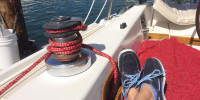
Here's What Shoes to Wear Sailing (and which not)

What is the Ideal Wind Speed for Sailing?

How Far Can You Sail In One Day?
Skills you'll need, how to use your mainsheet traveler (the right way).
The mainsheet traveler is one of those things it pays off to master as it can add knots to your speed. In this article you will learn how to use it well so
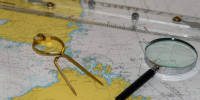
How To Plot a Course on a Chart (Illustrated Guide)
Need to know, the ultimate guide to sail types and rigs (with pictures).
What's that sail for? Generally, I don't know. So I've come up with a system. I'll explain you everything there is to know about sails and rigs in this article.
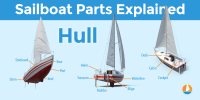
Sailboat Parts Explained: Illustrated Guide (with Diagrams)

Guide to Understanding Sail Rig Types (with Pictures)

The Only 50 Sailing Terms You'll Need To Know (With Pictures)
All how to sail articles.

15 Actionable Tips to Trim Your Sails for Speed

Can You Sail Alone & In What Sailboats? (Size & Type)

How To Trim Sails: The Ultimate Guide (with Cheat Sheet)

How To Learn To Sail: Ultimate Step-By-Step Guide

9 Ways to Learn to Sail for (Practically) Free

Do I Need a License to Drive a Boat? (Clear Info for 50 States)

Can You Sail With a Bimini Top Up?

What Are the Fastest Types of Sailboat (and Why)?

At What Temperature Will a Boat Engine Freeze?

What is a Swing or Lifting Keel? 14 Pros and Cons Explained

How Big Should a Sailboat Be to Sail Around the World?
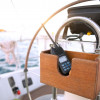
Do You Need a License to Sail Around the World?

Spinnaker vs. Gennaker: the Difference Explained
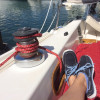
Is It Dangerous to Sail in a Thunderstorm?

What’s the Largest Boat One Person Can Operate?

Ultimate Guide to Nautical Chart Navigation (Plotting, Reading)
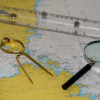
How To Learn Marine Navigation (Easy In-Depth Guide)

The Different Types of Marine Navigation
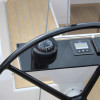
How to Use a Boat Compass (Complete beginners guide)

10 Insider Tips to Learn to Sail Faster and Save Money

Raising the Mainsail Single Handed: 5 Pro Tips

Everything You Need to Sail Around the World (by an expert)

Sail Names: Explained for Beginners (With 15 Examples)
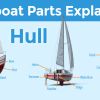
How To Sail Into the Wind (in 7 Simple Steps)

- Search Please fill out this field.
- Newsletters
- Water Sports
A Beginner's Guide to Sailing a Sailboat
Key Information for Beginners and Sailors
There are many ways to learn to sail:
- You can just jump in a boat with a friend and try to learn from experience
- You can sign up for a formal course at a sailing school
- You can buy or borrow a small sailboat and do it all on your own
No matter which way works best for you, it helps to understand the boat and what's involved in sailing first before you're out on the water, where suddenly you might get into trouble.
The Basic Steps of Sailing
Sailing involves both specific knowledge and skills. The following are the basic steps of learning to sail- as much as you can learn while not actually on a boat. You don't have to follow this order; skip ahead if you already know some of the basics. If you're mostly new to sailing, you might want to proceed through these steps like chapters in a manual.
- Understand Basic Sailing Terms. To get into sailing, you have to understand the words that are used to talk about the sailboat and the skills used to sail. Start here with a review of basic sailing terms. Don't worry about memorizing everything as many of these terms and concepts will become clearer as you read on about how to do it.
- Learn the Parts of the Boat. Before you go on the boat, it's helpful to know the words used in different parts of the boat. Even if you have an instructor, he or she won't say "Grab that rope over there and pull it," but instead will say "Haul in the jib sheet!" Review the basic boat terms you'll need to know.
- Start an Online Course. Now you're ready to learn more about what all those parts of the boat are used for. Here you can start an online learn-to-sail course by learning more about the parts of the boat along with a lot of photos, so you'll see what to do.
- Rig the Boat. Read to go sailing now? Hold it a minute- you have to rig the boat first by putting on sails and making other preparations. Here again are a lot of photos of what to do on a typical small sailboat used by beginners.
- Review Basic Sailing Techniques. OK, now you have the boat ready- so what do you do now to make it go? Manage the sails to go in the direction you want by learning basic sailing techniques.
- Discover How to Maneuver. Sailing in a set direction is reasonably easy, but eventually, you'll have to change direction. That often involves tacking and gybing. Take a moment to learn what's involved in these critical maneuvers.
- Recover From a Capsize. Now you've got the basics down. But did anyone ever tell you that small sailboats often tip over if the wind is gusting? Be prepared and carefully see how to recover from a capsize .
- Dock or Anchor the Boat. Now you're out there sailing and you've got the boat under control. Learn how to go faster, dock or anchor the boat and use some of the equipment you've ignored so far. Take a look at some of these additional sailing skills.
- Practice Tying Knots. For thousands of years, sailors have used times where it is cold or raining by doing things like tying knots. Knots are important on a sailboat and you will need to learn at least some basic sailing knots to sail at all.
- Sail Safely. At this point, plus practice on the water, you're good to go. However, it's good to remember that water is a dangerous place. Learn the basics about sailing safety. Staying safe makes it easier to keep having fun out there.
Related Articles
More related articles.
- BOAT OF THE YEAR
- Newsletters
- Sailboat Reviews
- Boating Safety
- Sails and Rigging
- Maintenance
- Sailing Totem
- Sailor & Galley
- Living Aboard
- Destinations
- Gear & Electronics
- Charter Resources
- Ultimate Boating Giveaway

Learning How to Sail 101
- By John Rousmaniere
- Updated: May 4, 2020
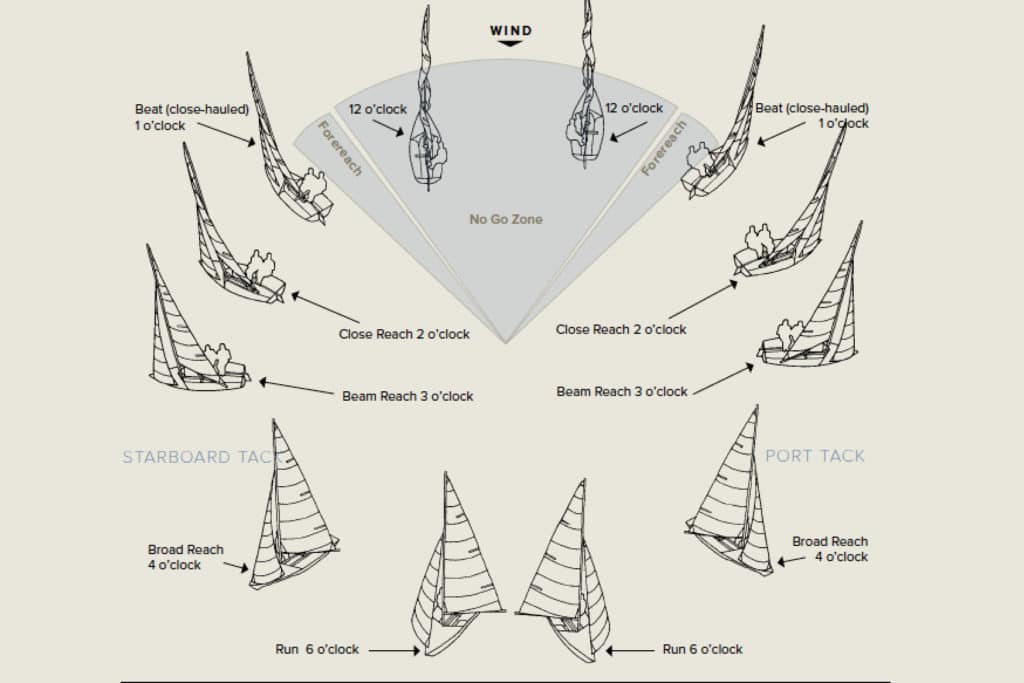
Points of Sail
“The idea of sailing a boat upon the sea can seduce even the happiest farmer or mountain climber. There is something about boat and water that sends romance churning in our hearts, and simply the sight of a boat can inspire a reverie.”
I wrote those words in the first edition of my sailing manual, The Annapolis Book of Seamanship , in 1983. They’re still there today in the updated fourth edition, published in 2014. And yet, as deeply as I feel about boats, I’m certain that when you’re afloat, romantic and magical thinking is no substitute for basic skills and fundamental knowledge.
To quote some other words I wrote back then: “Limitless in her poetry, a sailboat is still restricted by the realities of wind and sea.” Here I’ll describe some important basic skills when learning to sail for dealing with a few of those realities, including some tips and tricks of the seaman’s trade that I have learned and that should make you a more able, safe and confident skipper or crew.

How to Start Sailing
The very first step when you go sailing is to properly prepare yourself for the sometimes demanding and harsh elements you will encounter on the water. Take a wide-brim hat, a waterproof jacket, nonskid sneakers and, of course, a life jacket that fits you securely. Wipe on a gob or two of high-SPF sun lotion, and take the tube with you so you can continue to apply it lavishly. Those who suffer from motion sickness should consider taking a medication, preferably one that you’ve tested for side effects. Before heading out, write up a float plan including your itinerary and important contacts and share it with your friends and family, or your sailing club.
The most unsettling moment of a new sailor’s first day learning to sail often comes when you climb on board and feel the boat move under you. There’s plenty of reserve buoyancy, but if the boat’s small and skittish, you should step into the center of the cockpit. A bigger boat can be boarded via the side deck, but even it may sway and settle a little. Forget about looking graceful. Take advantage of any handhold you can grab.
Once everyone is on board, the skipper must assert command. To quote a wise captain and safety instructor, Karen Prioleau: “When leadership is obscure, tight situations get even tighter.” Assignments are made, gear is stowed, the bilge is pumped, an inspection is conducted to see that all is in order, sails are prepared to hoist, and plans are made to get underway. If the boat has a motor, it can be used to get away from the mooring or dock into open water before setting sail. But for now, let’s concentrate on getting underway on an engineless boat. Start by setting the mainsail, the big sail. The line to the boom (called the mainsheet) must be well eased so the sail, once set, spills wind (luffs) and doesn’t fill prematurely. The boom will flop around, so keep your head low and consider controlling it with a line called a preventer.
Trimming and Tacking a Sailboat
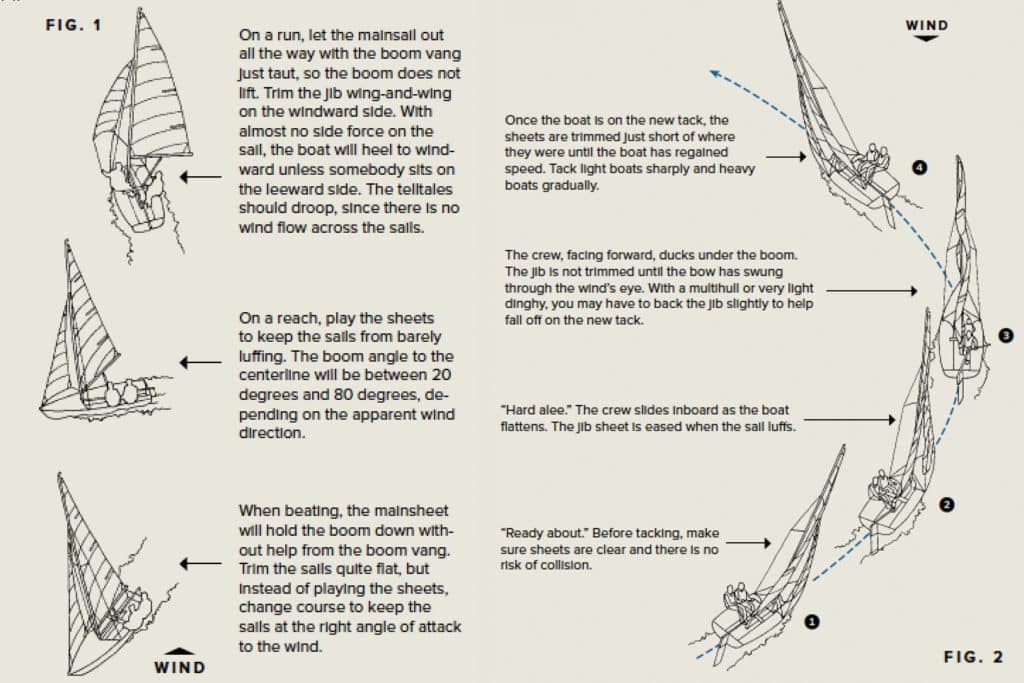
When the skipper says to cast off, up goes the jib, the smaller sail on the bow, also with a loose sheet. Casting off under sail is a little complicated because the boat isn’t moving, which means the rudder has little to no effect. That’s why the boat must be steered with the sails until there’s enough speed (or “steerageway”) for rudder steering. When learning to sail, start with the boat hanging off the mooring or pier; the sails will luff because the wind is blowing from directly ahead. If you’re looking at the bow, you’ll feel the wind on both ears. That angle is sometimes called the “wind’s eye.” Trim the jib—using the winch to bring the sail in, not let it out—to the side opposite the one where you want to sail. If you want to head off to the port side, you “back the jib,” or trim it to the “wrong” side. As the backed jib pulls the bow off, cast off the mooring. Once the wind is on that side, trim the jib to the correct side while also trimming the mainsail as the boat accelerates. In this way, the sails help steer the boat.
An entertaining and educational exercise is to sail a boat toward a buoy or other target on a reach, with the wind coming from the side (or beam) of the boat, and do a series of slow weaves as the sheets are eased and trimmed. When the skipper at the helm and the sail trimmers are in sync, everything goes well (see Figure 1). If you get nervous, slow down by easing the sails until they are just half-filled with wind.
Practice changing tacks. If you start off with the wind coming over the starboard side, you’re on the starboard tack. If the wind is on the port side, you’re on the port tack (see Figure 2). One of the two ways to change tacks is called “coming about,” or “tacking.” The helmsman starts the process by saying, “Ready about,” and after the crew answers that they’re ready, “Hard alee.” With a strong, fluid shove of the tiller or turn of the steering wheel, the bow passes through the eye of the wind and comes off onto the new tack (see Figure 3).
The other way to change tacks is to jibe, pulling the tiller or wheel in the other direction, easing the sheets out, and swinging the stern through the wind’s eye until the boom swings across (see Figure 4). The steerer’s commands are “stand by to jibe” and, after the crew acknowledges, “jibe-ho.” The boom will come across suddenly and rapidly, so all crewmembers must be careful to duck their head as they trim the mainsail and jib to the new sides.
Since we are talking about steering, this may be the place to encourage you to steer from the windward side of the tiller or wheel. The windward side (closer to the wind direction) is higher than the leeward side (farther from the wind) when the boat is heeling, so you will have greater visibility to see “puffs” of wind (the dark shadows moving across the water) as they approach.
Using Telltales
One phenomenon of sailing is that as the boat speeds up or slows down, the wind seems to change direction and force. That’s because there are two types of wind. One, called “true wind,” is the breeze you feel when standing still. The true wind’s velocity and direction are the same for all nearly stationary objects. But if one of those objects moves (like a boat does), its motion affects the true wind to create “apparent wind,” which is felt by people on the moving object.
Sails are trimmed to the apparent wind. You can gauge the apparent-wind direction and force by feeling it on your skin, reading it on an electronic instrument, or seeing it on a telltale, which is a short length of yarn tied to one of the boat’s side stays (shrouds) that support the mast. While all those devices indicate the wind direction, none of them tells you if your sails are trimmed correctly for that direction.
Sails are airfoils, with a deep curve that redirects the apparent wind to produce a force that pulls the boat forward (somewhat like a wing lifting an airplane off a runway). Side force is absorbed and redirected to forward force by the airfoil-shaped fins under the boat, the centerboard and keel. As airfoils, sails should be trimmed to suit the wind, and the boat should sail the most effective angle to that wind.
A simple, effective indicator of that sailing angle is a set of short lengths of special telltales—yarn or ribbons—that are sewn or glued to sails. Some telltales are placed on the jib, near its leading edge (the luff), on both sides of the sail. Ideally, there should be three pairs of jib telltales at equal intervals up and down the sail’s luff. But one pair about halfway up the sail should do the job. Other telltales are secured, one at a time, on the trailing edge of the mainsail (the leech), or at least at or near the second batten from the top. The jib telltales on both sides of the sail should stream aft most of the time, with the windward ones lifting slightly from time to time. The mainsail leech telltale should stream aft about half the time. If your telltales behave differently, try steering closer to or farther off the wind, and experiment with sail trim. An inch or two of sail trim or ease can get them flowing again and make the boat sail faster.
Sailing Rules of the Road
Once you’re sailing, you may be near other boats and worried about who is under an obligation to alter course to avoid a collision. The basic rule is that more maneuverable boats must give way (change course) to avoid boats that are less maneuverable and that, therefore, may continue on their course, giving them right of way. (These are sometimes called “stand-on vessels.”) Usually powerboats must give way to sailboats, but all smaller boats, sail and power, must give way to big ships in a narrow channel and other vessels requiring room to maneuver.
There are a few other basic rules. When one boat is overtaking another, no matter what type, the overtaking boat must give way. When boats under power meet each other bow to bow, they each should turn to starboard so they pass port side to port side. And when sailboats are sailing near each other, without engines turned on, the one on the port tack (with the wind coming over the port side) is obliged to give way to the one on starboard tack. But even if the rules give you the right of way, proceed just as sensibly and defensively as you would when you face the realities of wind and sea at other times in open waters.
Once you’ve mastered these basics, get out on the water as often as possible to hone your skills in all conditions. One of the great things about sailing is that no matter how many miles you cover, there’s something new and different to experience every time you set sail. Congratulations on taking the first step toward what, for so many of us sailors, has become an enjoyable, lifelong pursuit.
Renowned sailing writer John Rousmaniere has logged over 40,000 nautical miles of bluewater sailing, including nine Newport-Bermuda races. This article is based on material from the fourth edition of his comprehensive sailing manual, The Annapolis Book of Seamanship (Simon & Schuster, 2014).
- More: How To , learn to sail , sailing 101 , seamanship
- More How To

Best Practices for Boat-Show Shopping

Grease the Wheels of Your Boat: A Guide to Proper Lubrication

A Bowsprit Reborn: A DIY Renovation Story

Rigging Redo: Our Switch to Synthetic
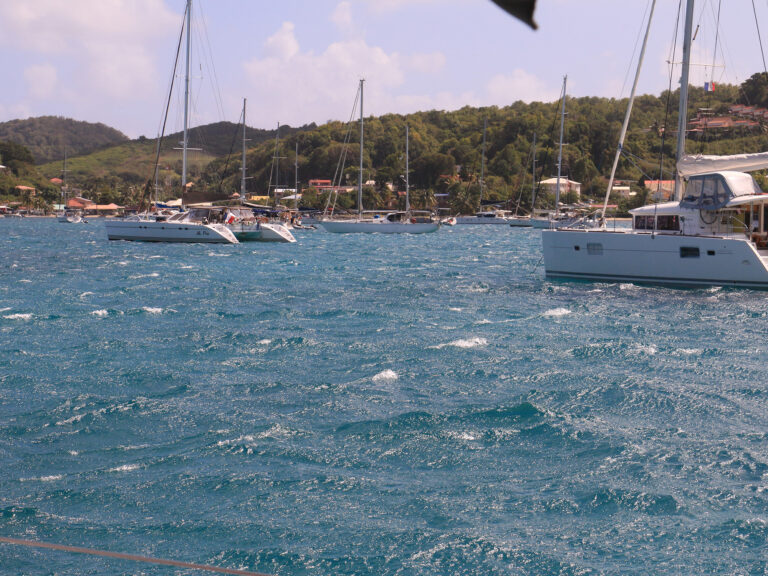
Understanding Wind in the West Indies
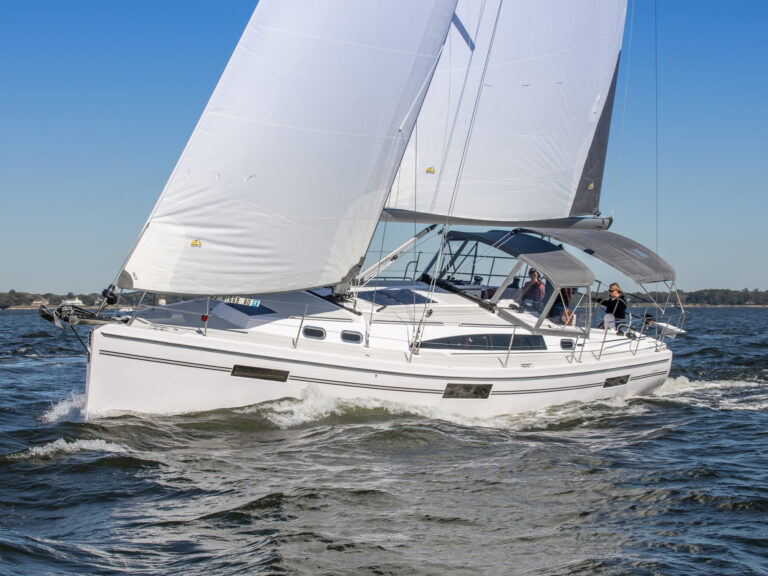
Catalina Introduces the 6 Series

At Your Service

Galápagos: A Paradise Worth the Paperwork
- Digital Edition
- Customer Service
- Privacy Policy
- Terms of Use
- Email Newsletters
- Cruising World
- Sailing World
- Salt Water Sportsman
- Sport Fishing
- Wakeboarding
EMBARK ON A LIFETIME OF ADVENTURES
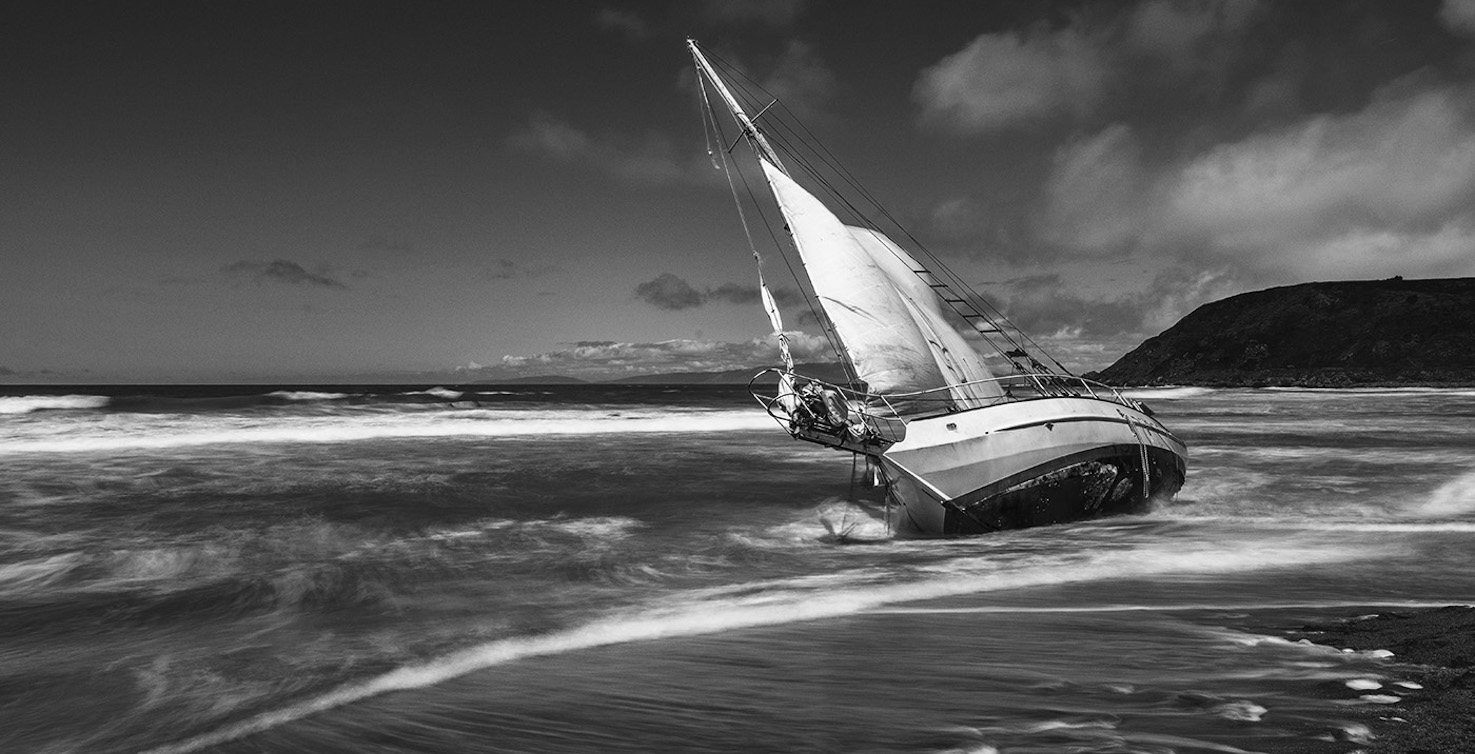
THE STAKES ARE HIGH
Embark successfully.
THE ULTIMATE LIVEABOARD SAILING COURSES
4,000+ alumni sailing the world, outstanding instructors, outstanding reviews, official asa certified facility, official asa sailing school for dream yachts, as featured in.

Connect With Us
Plan Your Trip
START YOUR SAILING JOURNEY NOW
FREE RESOURCE! AVOID COMMON PITFALLS ON YOUR SAILING JOURNEY
We’ve successfully taught more than 4000 students over the years and can help you avoid common mistakes.
Here are 5 Top Tips to help you confidently embark on your sailing journey.
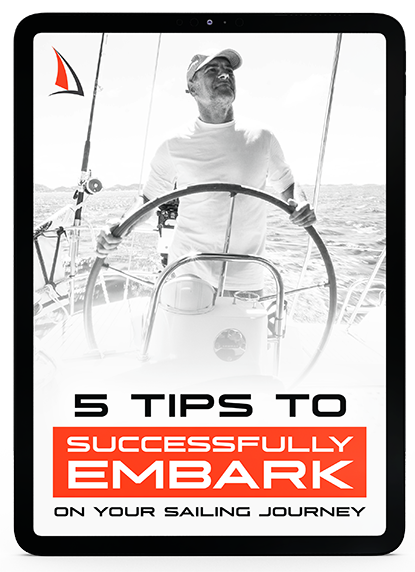
- TERMS OF USE
- Privacy Policy
Beginner Sailing Tips: A Comprehensive Guide for New Sailors
Sailing is one of the most liberating outdoor experiences, combining adventure, skill, and the serene beauty of being out on the water. However, for beginners, sailing can seem daunting, with technical terms, equipment choices, and the actual process of handling a boat. This guide aims to demystify sailing, offering essential tips to get you confidently navigating the water as a novice sailor.
1. Start with the Right Boat for Beginners
When learning to sail, your boat choice can make a world of difference. Smaller, more manageable boats are ideal for first-time sailors, as they are simpler to operate and provide a good learning platform.
Popular Beginner Sailing Boats:
- Specs : Length: 13.9 ft, Weight: 120 lbs
- Price : $4,500 – $6,000 (new)
- Why it’s good : Known for its simple rigging and easy-to-handle design, the Sunfish is a great single-person dinghy. It’s light, responsive, and perfect for learning the basics of sail control.
- Specs : Length: 13.78 ft, Weight: 130 lbs
- Price : $5,000 – $7,000 (new)
- Why it’s good : The Laser is another popular small dinghy, ideal for beginners looking to eventually progress into competitive sailing. Its easy rigging and low maintenance make it perfect for learning.
- Specs : Length: 16 ft, Weight: 320 lbs
- Price : $12,000 – $14,000 (new)
- Why it’s good : If you’re interested in catamaran sailing, the Hobie Cat 16 is an excellent option. It offers stability and speed but is also forgiving enough for beginners to handle.
When starting out, used boats can provide more budget-friendly options, allowing you to test the waters without a huge initial investment. You can find used Sunfish or Laser boats for as little as $2,000.
2. Learn Basic Sailing Terminology
Understanding sailing terminology is essential. Here are some key terms you’ll need to know:
- Port and Starboard : Port is the left side of the boat (when facing forward), and starboard is the right side.
- Bow and Stern : The bow is the front of the boat, and the stern is the back.
- Mainsail and Jib : The mainsail is the large sail that captures most of the wind, while the jib is a smaller sail located at the front of the boat.
- Tacking and Jibing : These are the two main methods of changing direction. Tacking involves turning the boat into the wind, while jibing involves turning away from the wind.
- Boom : The horizontal pole that extends from the bottom of the mast, holding the foot of the mainsail.
3. Take a Sailing Course
One of the best ways to learn how to sail is by taking a certified sailing course. Organizations like the American Sailing Association ( ASA ) and U.S. Sailing offer beginner courses that cover everything from knot-tying to navigation. These courses typically include hands-on instruction with professional guidance.
What to Expect in a Beginner Course:
- Duration : Most beginner courses last between 2 to 5 days.
- Cost : Prices range from $400 to $1,200, depending on location and course level.
- Skills Taught : You’ll learn how to rig a boat, steer, control sails, read the wind, and basic safety maneuvers.
4. Understand Weather Conditions
Weather plays a critical role in sailing, and understanding how to read and interpret it is essential. As a beginner, avoid sailing in harsh conditions, such as strong winds, heavy rain, or choppy waters.
Key Weather Factors to Monitor:
- Wind Speed : Ideal wind speeds for beginners are between 5-10 knots. Anything above 15 knots can be challenging to control.
- Wind Direction : Learn how to “read” the wind and its direction by observing water ripples, flags, or using a wind vane.
- Tides and Currents : Coastal sailing requires an understanding of tides and currents, which can affect your boat’s speed and direction.
Apps like Windy , SailFlow , and PredictWind offer real-time weather updates tailored to sailors, helping you make safe, informed decisions before heading out.
5. Sailing Gear and Equipment
The right gear ensures your safety and comfort while sailing. Here’s a list of essential items to invest in as a beginner:
- Price : $50 – $150
- Recommendation : Look for life jackets specifically designed for sailing, with features like freedom of movement and durable materials.
- Price : $20 – $50
- Recommendation : Opt for lightweight gloves with reinforced palms for extra durability.
- Price : $100 – $500 (for a jacket and pants set)
- Recommendation : Breathable, waterproof gear with a snug fit will keep you dry without sacrificing comfort.
- Price : $40 – $150
- Recommendation : Look for shoes with excellent traction and drainage to keep your feet dry.
6. Safety Tips for New Sailors
Safety is paramount when you’re out on the water. Here are a few tips every beginner should follow:
- Always Wear Your PFD : Even if you’re a strong swimmer, wear your life jacket at all times.
- Check Your Equipment : Before heading out, inspect your boat and gear. Make sure the lines, sails, and rudder are in good condition.
- Tell Someone Your Plan : Share your sailing plans with a friend or family member, including your expected return time.
- Keep an Eye on the Weather : Conditions can change quickly. Be prepared to head back to shore if the weather deteriorates.
7. Practice Makes Perfect
Sailing requires practice to master the art of reading the wind, controlling the sails, and navigating the water. Start small, focusing on shorter, simpler trips in calm waters. As you gain confidence, you can try more challenging conditions and longer journeys.
Join a local sailing club or association to gain access to resources, mentorship, and practice opportunities. Many clubs also offer affordable boat rentals for practice sessions.
8. Know Your Sailing Costs
The cost of sailing can vary depending on the size of the boat, equipment, and location. Here’s a rough breakdown of initial costs for a beginner:
- Boat (used) : $2,000 – $7,000
- Sailing Course : $400 – $1,200
- Safety and Gear : $200 – $800
- Ongoing Costs : This includes maintenance, marina fees, and boat storage, which can range from $500 to $2,000 per year.
Budget-Friendly Tips:
- Buy Used Gear : Many sailors sell used equipment that’s still in good condition, especially life jackets and foul weather gear.
- Rent Before You Buy : If you’re not ready to invest in your own boat, renting is a cost-effective way to practice and enjoy the sport.
9. Conclusion: Enjoy the Journey
Sailing is an incredibly rewarding hobby, offering a perfect blend of adventure, relaxation, and skill development. As a beginner, take your time to absorb the basics, practice consistently, and gradually build your confidence. With the right equipment, knowledge, and mindset, you’ll be cruising the waters like a seasoned sailor in no time.
Happy Boating!
Share Beginner Sailing Tips: A Comprehensive Guide for New Sailors with your friends and leave a comment below with your thoughts.
Read How to Find the Perfect Cooler for your Boat: Guide until we meet in the next article.
Similar Posts

Bennington Pontoon Bimini Top Parts: Guide
Ah, the pontoon boat – a haven for relaxation and fun on the water. But sometimes, the sun can turn that haven into a bit of a scorcher. That’s where a bimini top comes in, providing much-needed shade and creating a comfortable spot to enjoy your time on the pontoon. If you’re a proud owner…

Boat Spreader Lights: A Comprehensive Guide
When it comes to ensuring visibility and safety on a boat, spreader lights play a crucial role. These powerful lights are mounted on the spreaders of a sailboat’s mast or other elevated positions on various boats, illuminating large areas like the deck or surrounding waters. Whether you’re fishing at night, docking in the dark, or…

Steiger Craft vs. Parker Boat: Detailed Comparison
The battle for boatyard supremacy often pits Steiger Craft and Parker Boats against each other, both vying for the hearts (and wallets) of discerning captains. But before you cast off your dock lines, let’s navigate the choppy waters of comparison, examining these two brands in detail to help you determine who reigns supreme for your…

Best Boating Sunglasses: Guide to Choose
Sun, spray, and endless horizons – boating offers a unique combination of relaxation and adventure. But that sunshine can be a double-edged sword. Glistening water creates blinding glare, reducing visibility and making navigating treacherous. To truly enjoy your time on the water, a good pair of boating sunglasses is essential. This guide will help you…

Exploring the World of Spirit Boats: Guide
Across cultures and throughout history, vessels carrying the spirits of the deceased have traversed the currents of myth, religion, and folklore. These symbolic boats, often referred to as spirit boats, serve as a powerful reminder of the human belief in an afterlife and the desire to guide the departed on their final voyage. A Global…

Power of Lund’s 16-Foot Boats: The Mighty 16
Lund boats are renowned for their rugged construction, smooth ride, and exceptional fishability. But within their impressive lineup lies a hidden gem – the mighty 16-footers. These compact yet capable boats pack a punch, offering versatility and performance for anglers and outdoor enthusiasts alike. A Lund for Every Adventure: Lund doesn’t just offer one 16-foot…
- MEMBER LOGIN
Learn to Sail

Learn to Sail in Boston Harbor. The most thorough and effective adult beginner's course in New England.
Whether you’re a complete beginner or a sometime sailor, we guarantee this course will teach you to sail safely and confidently, or we’ll continue your lessons at no extra charge (see student information sheet for details) .
We’ve refined our Learn to Sail course over 45 years, so it combines our own proven lesson plans with the best elements of standardized national curriculums, without ever forgetting that we all sail for fun.
In our classroom sessions, we will cover the fundamentals of sailing – from sail trim to basic navigation – so you will be prepared when you head out for each corresponding onboard lesson. On the water, we pair each instructor with three students so you’ll get lots of one-on-one guidance developing steering, sail handling, and crewing skills.
The Learn to Sail course is taught on Sonars and covers all the basics, including: Parts of the Boat and Rigging, Points of Sail, Tacking and Jibing, Landing at a Mooring, Balance and Sail Shape Control, Rules of the Road, Man Overboard Drills, Chart Reading and Navigation.
The result? You’ll graduate fully prepared to sail here in Boston or your favorite harbor anywhere.
All Learn to Sail graduates can activate a FREE 30-day Student Membership on the Solings and Sonars.
Use your Student Membership to practice your sailing skills, take your friends sailing, and enjoy some of the benefits of membership here at the Boston Sailing Center. Student members can also join the coaching clinics offered on alternating Fridays during the season. Some restrictions apply. See Student Information Sheet for details.

ASA 101 Certification awarded upon successful course completion, written ASA 101 test, and a $39 ASA registration fee. Written test must be completed within one year of course completion.
Course Fee:
Prerequisites:, prepares you for:.
Daysailing Membership
Included Text Book:
ASA’s Sailing Made Easy
ASA Certification:
ASA 101 Basic Keelboat
The Learn to Sail Course is offered in 3 different formats: 4 Week, Vacation Week, and Weekend. All formats consist of four two hour online classroom sessions and four three and a half hour the water sessions for a total of 22 hours of instruction – 8 hours of classroom time and 14 hours on the water.
Held over two consecutive Saturday/Sundays.
In person classroom Sessions are on Saturday and Sunday mornings from 10:30am-12:30PM. Sailing Sessions are on two consecutive Saturday and Sundays from 1:30-5:00PM. A new course starts every other Saturday, with the exception of some holiday weekends.
Learn to sail in one week! Monday morning through Thursday afternoon. Format contains in-person classroom sessions.
Offered Monday through Thursday. In person classroom sessions are Monday through Thursday from 9:30-11:30am, followed by afternoon sailing sessions from 12:30-4pm.
This format meets twice a week for four weeks, alternating evening Online Classroom Sessions and Sailing Sessions.
Online Classroom Sessions meet on Tuesday evenings from 6:00-8:00 PM. Sailing Sessions are either Thursdays from 4:30-8:00pm, Fridays from 3:00-6:30pm, Saturday mornings from 9am – 12:30pm or Sunday mornings from 9am – 12:30pm.
Choose Thursday, Friday, Saturday, or Sunday sailing sessions upon checkout.
Note: Due to earlier sunset, sessions will take place on Friday, Saturday, or Sunday ONLY later in the season.
Before purchasing a course, please review the Student Information Sheet and Cancellation + Rescheduling Policies .
- See Format descriptions above
Vacation Week
Group enrollment.
Signing up with more than one person? We have a discount for that! Groups of two or more who sign up together for the same course qualify for discounts of 10% off the course fee after one student has purchased the course at full price (in other words, it’s full price for the first person and 10% off for each additional person).
To qualify for the group enrollment discount, purchases must be made over the phone. Contact the office at 617-227-4198 to register your group.
Course Documents
Learn to sail student information, learn to sail cancellation + rescheduling, learn to sail course outline, asa veteran's program.
At ASA and Boston Sailing Center, we recognize the sacrifices made by the men and women who have served or are serving in our country’s armed forces. As a token of our appreciation, and our way of saying thank you, we are inviting veterans and active military personnel to share our passion for sailing by offering a discount on our ASA 101 Basic Keelboat Sailing Course. Trade in your ship for ours and join us on the water with the wind in your sails.
Boston Sailing Center offers 10% off the Full Price of our ASA 101 Basic Keelboat Learn to Sail Course to active miliary and veterans. To receive your 10% off coupon, complete ASA’s form and once received, contact the Boston Sailing Center at 617-227-4198 to enroll with your course date (do not sign up through BSC’s website).
Our team is here to help! Please reach out by phone or email and an office manager will be happy to assist you.
- +1 617-227-4198
- [email protected]

Home Education Adult Sailing
Adult Sailing
Learn to sail with us sailing, whether you’re a first-time sailor or an experienced instructor... we have an educational opportunity for everyone....
Part of US Sailing’s vision is to introduce as many people as possible to this great sport. We want to make sure you’re learning in a safe, fun, high-quality environment…because if you’re a well-trained, competent sailor you’ll love sailing as much as we do.
US Sailing provides education and instruction in four separate areas: Small Boat (i.e. day sailing), Keelboat, Powerboat and Windsurfing. Learn more about the different programs offered by US Sailing schools and instructors. We’ll help you decide what kind of boat you want to learn on and find a course to take – and we’ve written the books ourselves to make sure they’re the best around.
Sailing Certification Courses
Get started here.
Have you ever dreamed of sailing to an exotic destination? Perhaps you are looking for a sport to do with your family or better yet, it is on your bucket list. Whatever the reason, sailing is easy to learn and unlike some other sports, it is something you can do throughout your lifetime.
Find a School Near you!
Small Keelboat Track
- Basic Keelboat
- Performance Sailing
- Learn Basic Keelboat Online
Cruising Track
- Basic Cruising
- Bareboat Cruising
- Catamaran Endorsement
- Coastal Navigation
- Coastal Passage Making
- Celestial Navigation
- Cruising Powerboat Courses
Interested in learning how to sail, but not sure if you are ready for a full commitment?
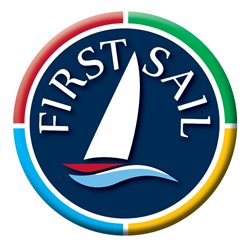
Sailing is the perfect activity for anyone who enjoys water sports and outdoor recreation. Sailing can be exciting or relaxing. You can compete in racing or take a leisurely sail with family and friends. Regardless of age, ability or limitation, sailing has something for everyone.
Take Your first sail
- Sailing Basics
- Get Started
- Get Inspired
- Be a First Sail Location
Adaptive Sailing
Access to the sport of sailing for all.
Sailing is a sport of freedom –of the wind, water, body and spirit. Our Adaptive Sailing resources, courses, and events are designed to share the freedom of sailing with people with disabilities. Looking to incorporate an adaptive program at your organization? Looking to connect with disabled sailors or find a place to sail? US Sailing is here to support you.
Download the Adaptive Sailing Resource manual
- Classifications
- Instructor Workshop
- Accreditation
- Sailor Resources
Safety At Sea
Be prepared for uncertain and trying at sea scenarios.
The four types of SAS courses offered are designed for sailors of all types and levels — cruisers and racers, novices and experts and will prepare you for unsafe conditions and at sea challenges.
find out more about Safety At Sea seminars
- Find a Course
- Attendance Look Up
- Host a Course
Safety at Sea
- Safety at Sea Planning
- Hosting a US Sailing Championship

Andrew Clouston SVP Programs & Services Email Andrew Clouston

Betsy Alison Adult Director Email Betsy Alison 401-342-7914

Diana Emmanuelli Competition Manager Email Diana Emmanuelli 401-342-7912
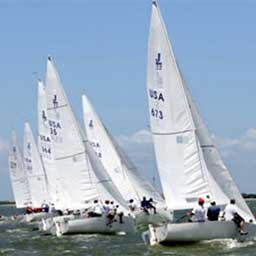
Karen Davidson Adult Program Coordinator Email Karen Davidson (401) 342-7934
Copyright ©2018-2024 United States Sailing Association. All rights reserved. US Sailing is a 501(c)3 organization. Website designed & developed by Design Principles, Inc. -->
- Sail cruising courses
Our practical and theory courses will take you from complete beginner to capable skipper and beyond
Stepping into the world of sailing for the first time is exciting and exhilarating. The courses in the RYA Yachtmaster training scheme will help you learn to sail and build confidence, become a useful crew member and even learn how to skipper a sailing yacht and manage it’s crew.
Most courses can be taken either on your own or with friends and family, including children provided they meet our minimum age recommendations. There are also flexible options allowing you to do the course in one go or split over several days or weekends.
Our sail cruising courses can also help you progress to the RYA/MCA Yachtmaster Certificates of Competence which are recognised by maritime authorities worldwide and can be commercially endorsed for professional skippers and crew.
So whether you’re new to boat ownership, want to charter a yacht on holiday, or to venture further offshore – there’s an RYA course for every level.
Our practical on-the-water courses build confidence, teaching you everything from basic terminology and safety tips to how to skipper a yacht and manage its crew. You can enter at any level, provided you have the correct level of experience.
Cruising Level 1 - An entry level course focusing on the principles of sailing a yacht. Can be run in conjunction with the Basic Skills course.
A short introduction to sailing for complete beginners.
Cruising Level 2 - Build on the skills gained during Start Sailing, Competent Crew or Day Skipper, focusing on sailing techniques as both crew and helm.
A hands-on course for anyone interested in becoming a useful crew member.
A course for aspiring skippers with some yachting experience and basic navigation and sailing skills.
Advanced skippering techniques for those with considerable knowledge of sailing and navigation, wanting to undertake coastal passages by day and night.
Our navigation and other specialist short courses complement the sail cruising practical courses and will take your knowledge and confidence to the next level.
A basic introduction to navigation for new skippers, crew or anyone interested in getting out on the water.
A more comprehensive course recommended for inexperienced skippers and anyone thinking of doing the Day Skipper practical course.
Take your theory knowledge to the standard required for the RYA Yachtmaster Coastal and Offshore practical exams.
Unravel the mysteries of astro navigation, using a sextant, ocean passage planning, worldwide meteorology and electronic navigation aids.
Get qualified to use a handheld or fixed marine VHF radio with our course and exam.
From first aid to diesel engine, there are a number of related classroom and online courses you may find useful as you develop your knowledge.
- Certificates of Competence
- RYA Yachtmaster
An RYA Yachtmaster Certificate of Competence is the ultimate aim of aspiring skippers. It is a well known, highly respected qualification worldwide, proving your experience and competence.
You are capable of coastal passages
You are competent to undertake passages up to 150 miles offshore
You have the knowledge and experience to sail worldwide
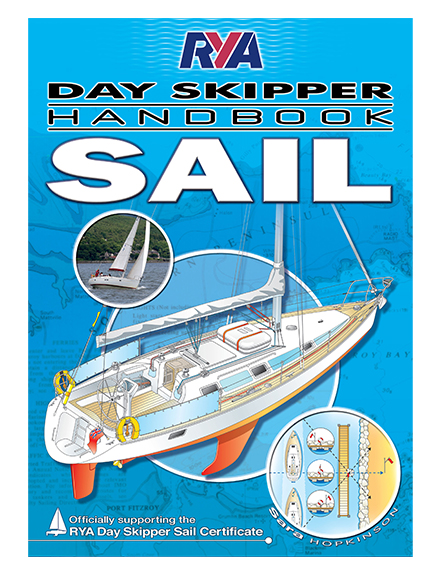
With more than 100 different titles to choose from, there’s an RYA book, eBook or audiobook for every age, interest and ability. Visit our webshop for course books and a range of supporting titles.
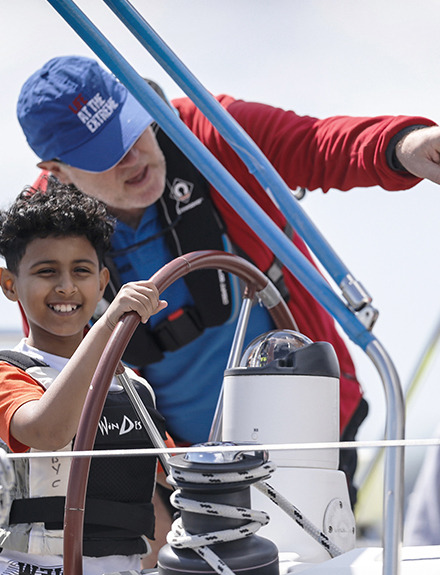
Sailing is great fun for all ages and there are plenty of opportunities for young people to get involved. Check our course descriptions for minimum age recommendations.
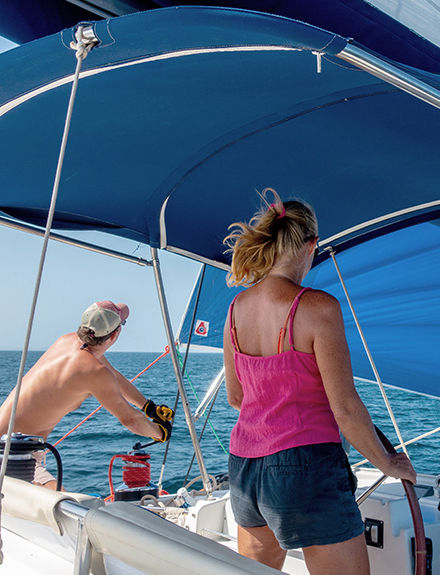
If you want to cruise outside of the UK you are likely to need an ICC. RYA course completion certificates can be used as evidence of your competence.
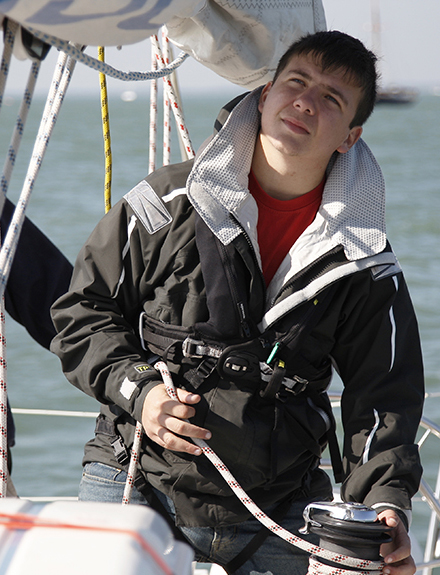
Find out more about commercial endorsements, professional qualifications and what it takes to work on the water.

IMAGES
VIDEO
COMMENTS
Learn to Sail. Your dream to learn to sail is close to becoming reality. Find a school, take a course and set off on your new adventure. ASA has everything you need to sail confidently and safely and you can start right now. We have compiled a list of tools and resources that will help you learn the basics of sailing before you get out on the ...
7 easy steps to get into sailing: Focus on learning the theory first, focus on practice second. The essential sailing skills are sail trim, navigation, and boat safety. Start out using (free) online resources or Sailaway simulator. After that, gain experience by taking at least a couple of sailing lessons.
In fact, learning to sail a basic boat is relatively easy—in the right environment, you can start cruising with minimal experience. However, the idea of a beginner commanding a 55-foot ketch in the middle of the Atlantic Ocean is a bit ridiculous. Even though virtually everyone can sail, beginners should learn the basics in a controlled ...
American Sailing Association affiliated sailing schools now graduate and certify thousands of new sailors annually - sailors who learn faster, learn more and have more fun sailing in more new places. They choose ASA schools because they want to follow a proven curriculum in a professional, supportive learning environment under the direction ...
Learn how to dock a sailboat under sail, or under power, in a variety of different scenarios. Sailing legend Peter Isler walks us through the process using animations, illustrations, and live-action footage. Understand the techniques and skills required by both skipper and crew in order to make your docking experiences safe and easy.
Learn to Sail With a Boat. If you're lucky enough to have access to a boat, you can jump right into hands-on learning. Begin by familiarizing yourself with sailing theory, reading books and watching tutorials about sail trim, navigation, and boat safety for a solid foundation. Next, consider signing up for a sailing certification course to ensure you're learning sailing practices and ...
Sailboats Explained. Sailboats have many parts and esoteric names, but when you break it down, it isn't all that complicated. Here, we'll make it simple for you by doing just that. If you're new to sailing and want to learn the old-fashioned way, you need to take sailing lessons. But are they as expensive as people say?
Smallboat Sailing. Small boat sailing is a simple, inexpensive way to get started in the sport. The fundamental basics of sailing are most easily learned in small boats. Many small boats are designed specifically for youth, and most provide a lifetime of enjoyment for adults as well. Generally, small boats, are under 25 feet in length.
A: No, the course is fully self-contained. You can start the course at any time and do some or all of it at a time. Start Now! Learn to sail online with ASA - "Your First Sail" is a short, fun, online sailing course designed to familiarize you with the world of sailing.
An online sailing course by American Sailing. 4-6 Hours English Unlimited Access 5 x Sections 26 x Lessons 12 x Videos 5 x Quizzes 1 x Final Exam Certificate. $59. Online Course. ENROLL NOW. "ASA gave me the skills and confidence to move from a recreational sailor to a full-time live aboard cruiser. The courses are very well structured and the ...
Take a look at some of these additional sailing skills. Practice Tying Knots. For thousands of years, sailors have used times where it is cold or raining by doing things like tying knots. Knots are important on a sailboat and you will need to learn at least some basic sailing knots to sail at all. Sail Safely.
How to sail. Simple and practical demonstration of how to sail on a sailboat.http://www.alivesailing.com/https://www.instagram.com/skipper_igor/SUBSCRIBE to ...
Join me on a comprehensive sailing lesson. I teach you the basics you need to know to begin sailing, from vocabulary and parts of the boat to getting underwa...
Trim your sails accordingly (left). Tacking a boat is the act of changing course by swinging the bow of the boat through the direction of the wind. When sailing as close to the breeze as possible, at an angle of about 40 degrees, a boat is said to be "closehauled" or "hard on the breeze" (right). Illustration by Mark Smith.
EMBARK SUCCESSFULLY. 1. Get SKILLS Gain the skils, experience and formal certifications to sucessfully embark on your sailing journey. 2. Get EXPERIENCE You deserve an incredible adventure, award-winning instructors, sexy new sailboats and a fun learning environment. 3. Go SAILING Enjoy sailing with friends & family in exotic destinations.
On-The-Water Sailing Clinic. Master racing trim, helming, and boat handling with practical on-water training and shoreside seminars taught by s easoned coaches. THU SEP 19, 2024 • 4:30 PM PT. Sailing in Limited Visibility. Learn how to prepare for sailing in limited visibility at night and other conditions such as fog.
US Sailing provides education and instruction in four separate areas: Small Boat (i.e. day sailing), Keelboat, Powerboat and Windsurfing. Learn more about the different programs offered by US Sailing schools and instructors. We'll help you decide what kind of boat you want to learn on and find a course to take - and we've written the ...
3. Take a Sailing Course. One of the best ways to learn how to sail is by taking a certified sailing course. Organizations like the American Sailing Association and U.S. Sailing offer beginner courses that cover everything from knot-tying to navigation. These courses typically include hands-on instruction with professional guidance.
Trade in your ship for ours and join us on the water with the wind in your sails. Boston Sailing Center offers 10% off the Full Price of our ASA 101 Basic Keelboat Learn to Sail Course to active miliary and veterans. To receive your 10% off coupon, complete ASA's form and once received, contact the Boston Sailing Center at 617-227-4198 to ...
7. Wayfarer. Start your travels on the sea with the Wayfarer. The Wayfarer cruising dinghy, built by Hartley Boats is renowned for its sturdy construction and versatile design, stands out as an ideal small sailboat for families and sailing enthusiasts seeking a reliable vessel for both leisurely cruising.
Learn how to dock a sailboat under sail, or under power, in a variety of different scenarios. Sailing legend Peter Isler walks us through the process using animations, illustrations and live action footage. ... It is important to understand that you cannot learn to skipper a boat without actually being on a boat but you can learn some of the ...
US Sailing provides education and instruction in four separate areas: Small Boat (i.e. day sailing), Keelboat, Powerboat and Windsurfing. Learn more about the different programs offered by US Sailing schools and instructors. We'll help you decide what kind of boat you want to learn on and find a course to take - and we've written the ...
Our practical and theory courses will take you from complete beginner to capable skipper and beyond. Stepping into the world of sailing for the first time is exciting and exhilarating. The courses in the RYA Yachtmaster training scheme will help you learn to sail and build confidence, become a useful crew member and even learn how to skipper a ...
Accessible sailing sessions will start in April 2025, but volunteers are needed to start training now. Alex Hawtin enjoys sailing so much he has become an instructor at the club
The American Sailing Association has many great online resources to help you on your journey to learn how to sail. Start with our FREE Online Sailing Course and learn how a sailboat works, the common commands used to steer one and some basic sailing terminology. Watch ASA's Sailing Made Easy and Knots Made Easy videos that teach you some of ...
Ryan Brelage along with Evelyn Hannah practice roll tacking on a Flying Junior (FJ) dinghy during the N.C. State sailing team practice at Lake Crabtree in Morrisville, N.C., Friday, Sept. 6, 2024 ...